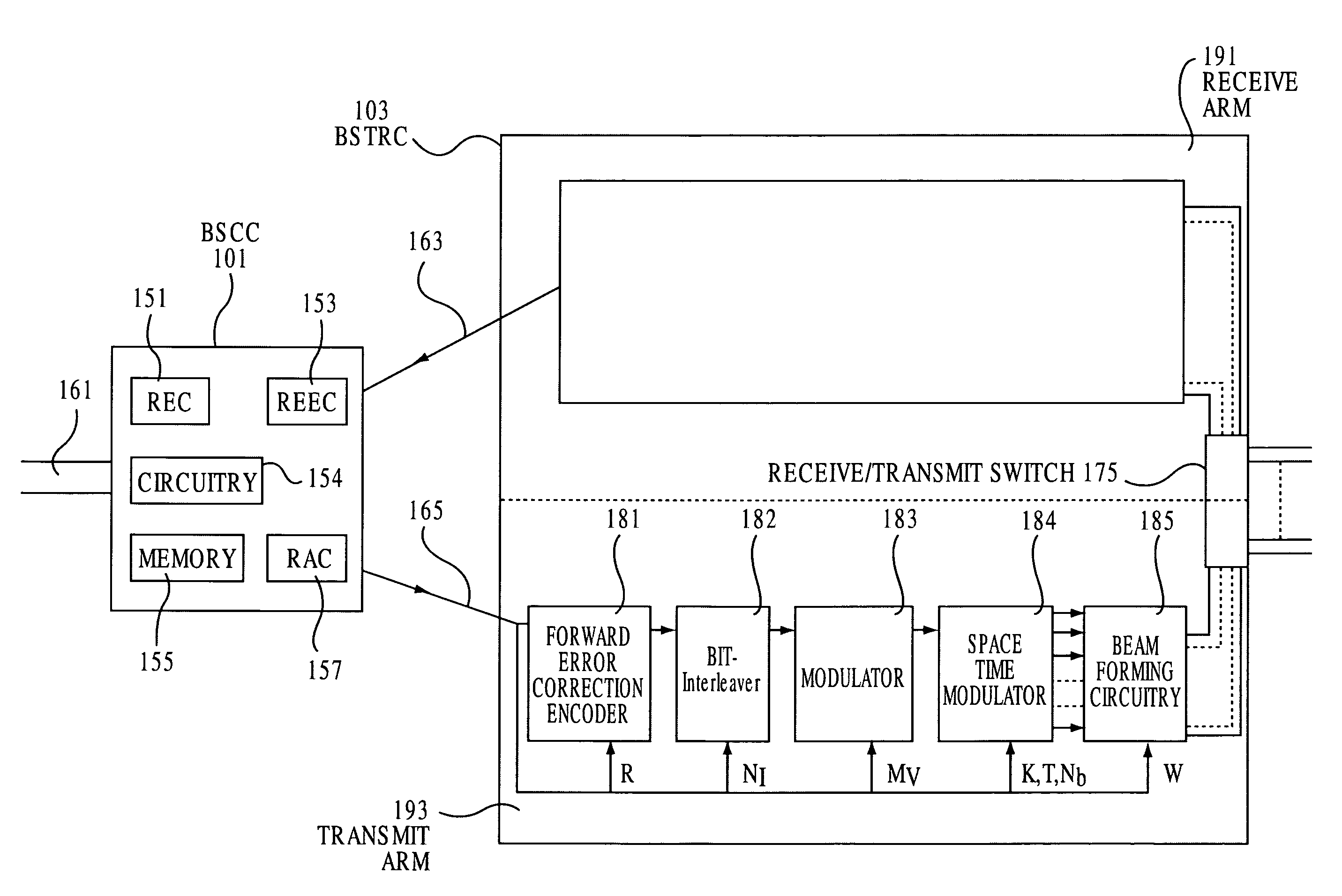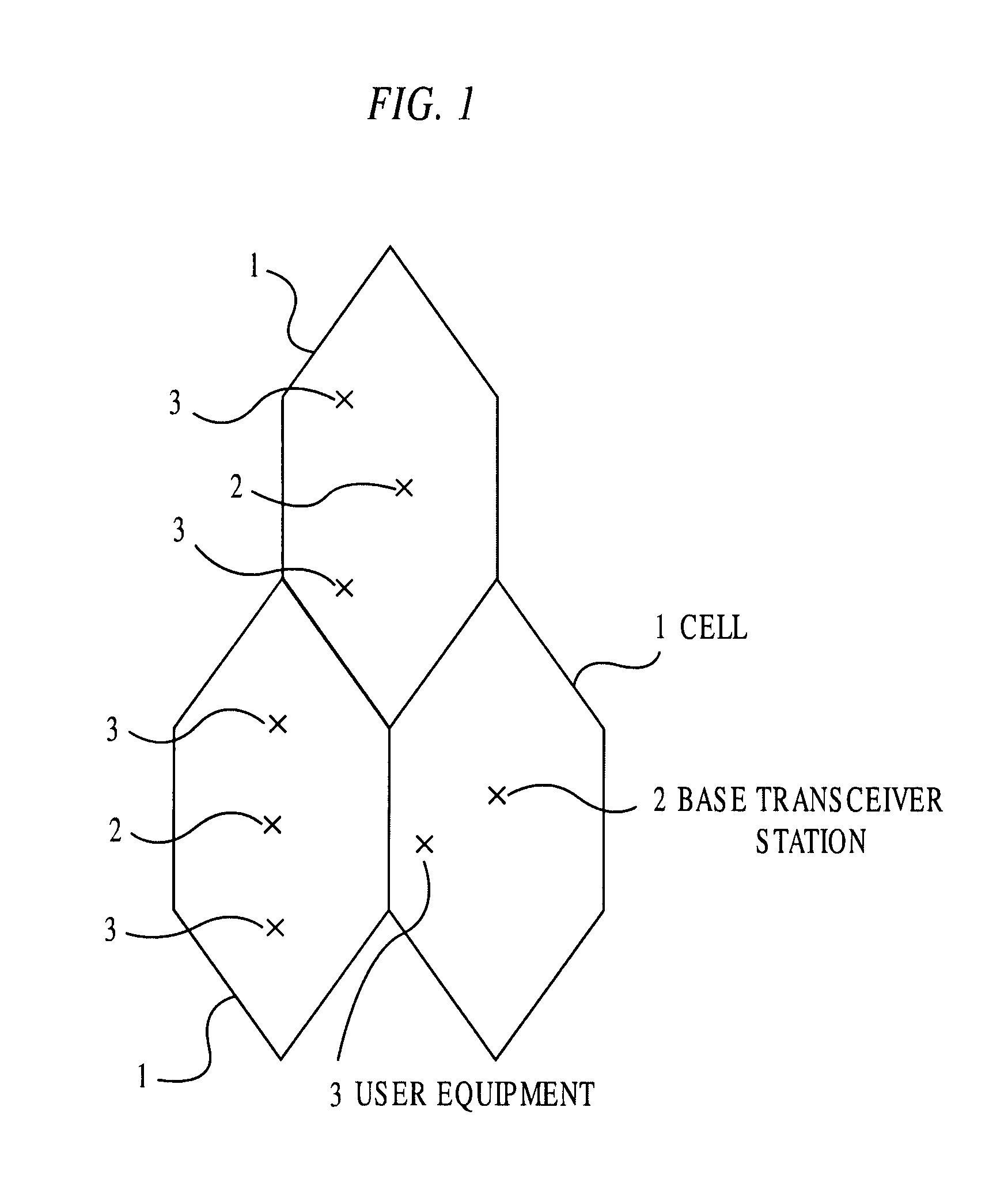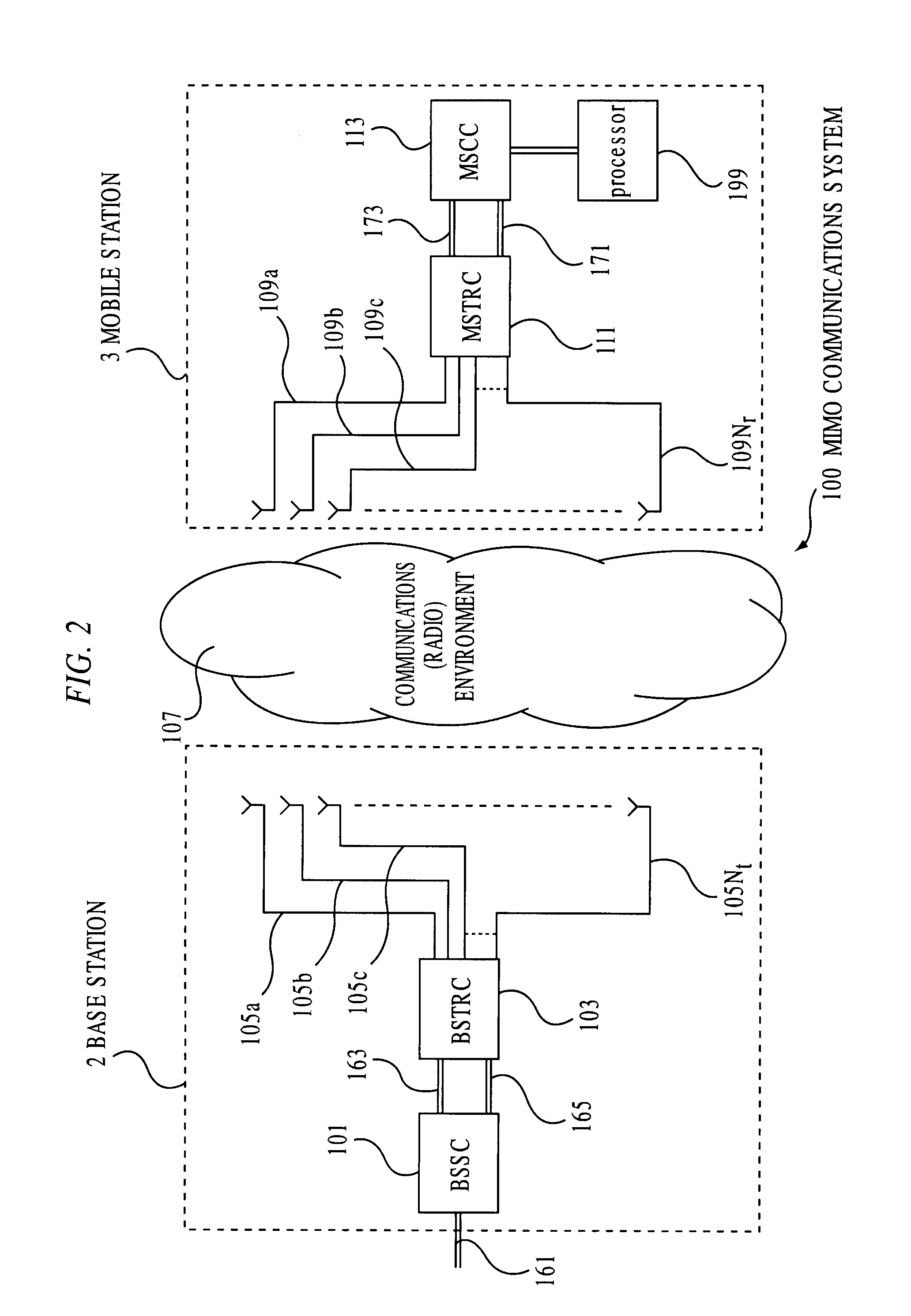Transmitting and receiving methods
a technology of receiving method and transmission method, which is applied in the direction of amplitude demodulation, line-faulst/interference reduction, baseband system details, etc., can solve the problem that the blast type modulation system cannot reach the channel capacity, and the controllers are complex to control both the transmission and receiving elements
- Summary
- Abstract
- Description
- Claims
- Application Information
AI Technical Summary
Benefits of technology
Problems solved by technology
Method used
Image
Examples
Embodiment Construction
[0033]Reference is made to FIG. 1, which shows part of a cellular telecommunications network in which embodiments of the present invention can be implemented. The area covered by the network is divided into a plurality of cells 1, only three of which are shown in totality with other cells bordering these complete cells. Each cell 1 has associated therewith a base transceiver station 2. The base station transceiver 2 is arranged to communicate with mobile terminals or other user equipment 3 located in the cell associated with a base station. The cells 1 may overlap at least partially or totally. In some systems, the cells 1 may have different shapes to that illustrated. In some embodiments the base stations 2 may communicate with mobile stations 3 outside their associated cell.
[0034]Reference is now made to FIG. 2 which shows the principles behind a typical multiple input multiple output (MIMO) communications system 100, which may be incorporated into a cellular telecommunications ne...
PUM
 Login to View More
Login to View More Abstract
Description
Claims
Application Information
 Login to View More
Login to View More - R&D
- Intellectual Property
- Life Sciences
- Materials
- Tech Scout
- Unparalleled Data Quality
- Higher Quality Content
- 60% Fewer Hallucinations
Browse by: Latest US Patents, China's latest patents, Technical Efficacy Thesaurus, Application Domain, Technology Topic, Popular Technical Reports.
© 2025 PatSnap. All rights reserved.Legal|Privacy policy|Modern Slavery Act Transparency Statement|Sitemap|About US| Contact US: help@patsnap.com



